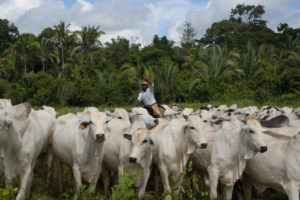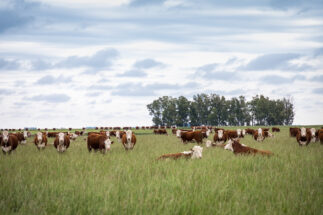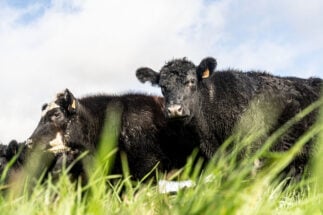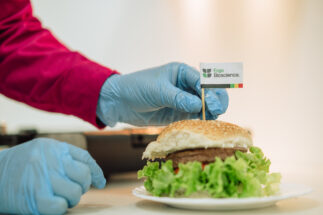Past the forest-green walls and vibrant orange countertop, the lure of a greasy grill beckons. In one corner, a soda dispenser with all the classics. In another, the words #BeTheChange painted in graffiti script.
And at the back, over a tabletop made of recycled plastic, Agustín Amarilla bites into two tender patties oozing out of a brioche bun seared with a smiley face on top. They look like beef, even feel and taste familiar – but there isn’t an ounce of red meat here, just a specially made, legume-based recipe, heavy on protein-rich peas.
The 24-year-old web developer was raised on a hearty typical Argentine diet of meat, in a suburb of the capital, Buenos Aires. The tradition of the asado, a barbecue gathering celebrated practically every Sunday, was followed religiously in his family.
But Amarilla says he has long questioned the morality of a diet based on killing animals, leading to him cutting out pork. During one recent lunch hour, he accompanied a friend to Joy Burgers & Plants, said to be Latin America’s first vegan fast-food chain, to try one of their plant-based burgers. Such an outing would have been unheard of just a few years ago, he says.
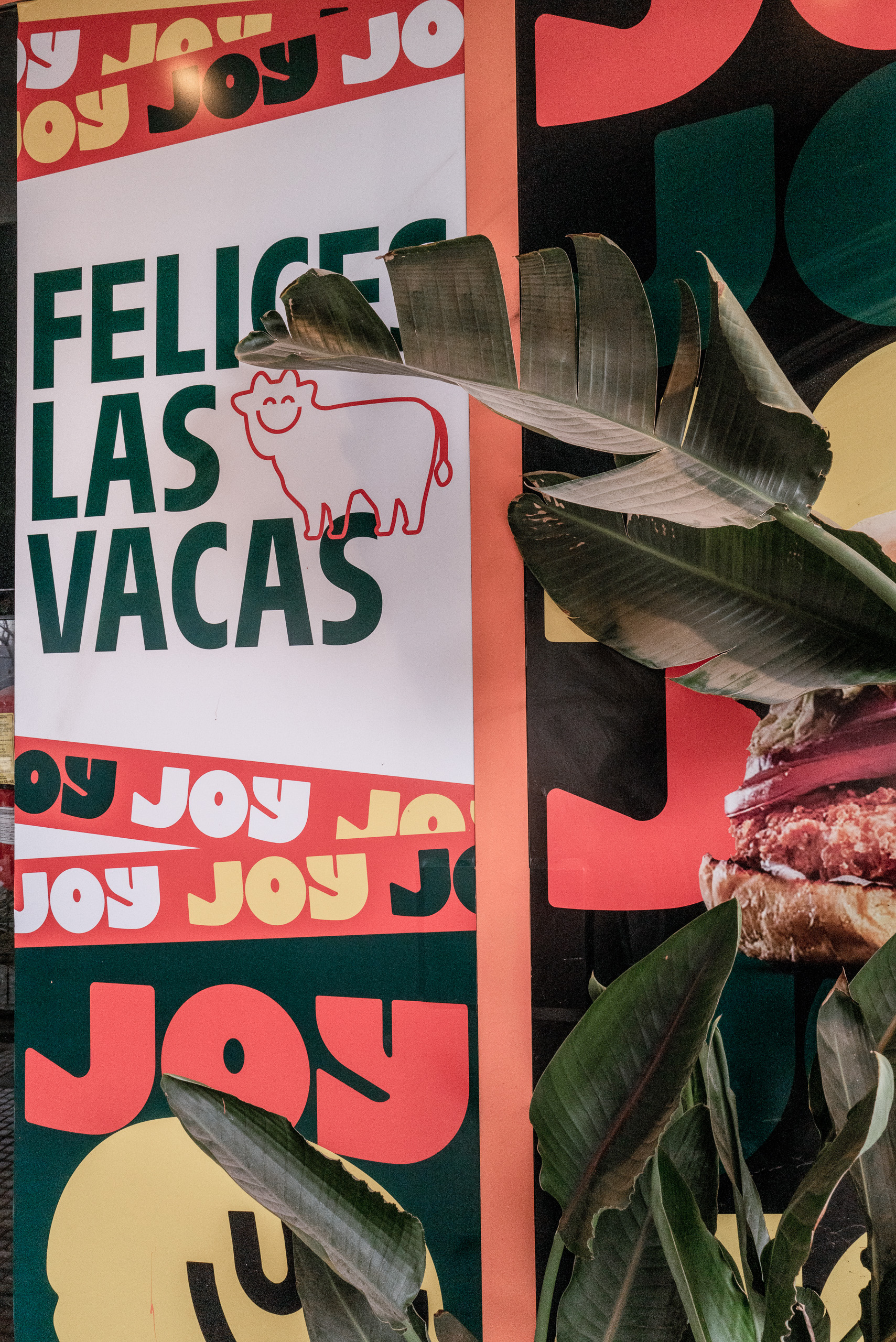

“Ham sandwiches, choripan [a chorizo sandwich popular in South America] … Everything had meat,” Amarilla says. “A vegan place like this is new, like so many other new things that are incorporated little by little.”
That Joy Burgers & Plants opened in Argentina – a country whose identity is inextricably linked to beef and cattle – is a reflection of changing global dietary patterns as volatile economies, environmental, health and animal welfare concerns converge. High-income countries that have traditionally been the drivers of meat consumption are seeing their numbers stagnate, while in places like Argentina and neighbouring Brazil, where beef carries important cultural and economic weight, plant-based diets are on the rise.
A survey of 1,000 people commissioned by the Vegan Union of Argentina found that in 2019, 9% of Argentines identified as vegan or vegetarian. A year later, that number was 12% – the equivalent of more than 5 million people, while another 12% considered themselves “flexitarian” – someone who has dramatically altered their meat consumption, but not given it up altogether.
In 2018, an estimated 14% of Brazilians were vegetarian, according to the Brazilian Vegetarian Society. By 2022, the group reported that as many as 46% of people in the country were reducing their meat consumption at least one day a week.
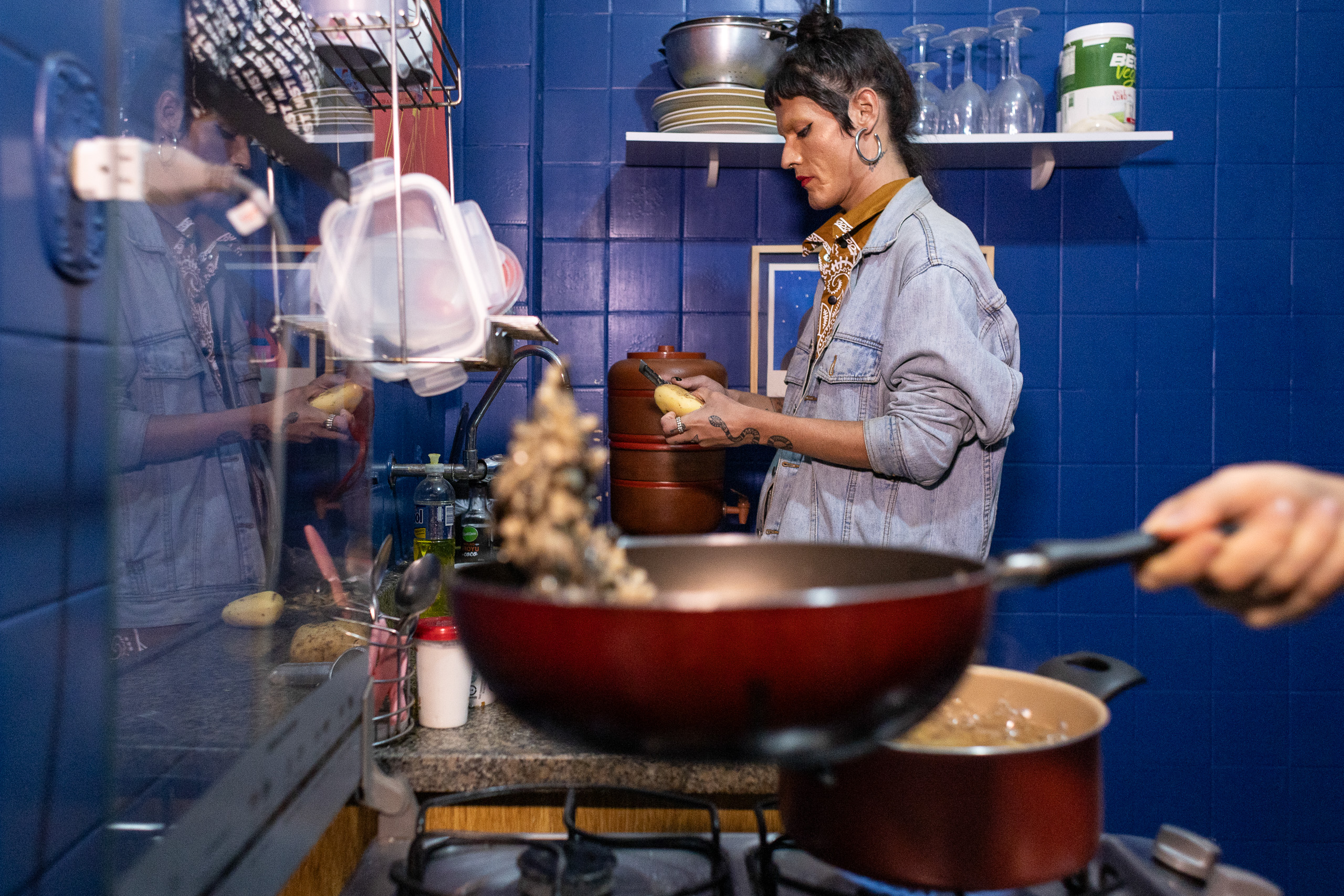


“The paradigm of food is changing,” says Matias Cabrera, the co-owner of Joy Burgers & Plants, which opened five outlets in Buenos Aires in the span of six months, and is planning an expansion into Chile. “I think the new generations are giving us a wake-up call in terms of what we should be consuming, and how we should be treating the planet.”
The role of beef
Amid these behavioural shifts, however, it is clear that beef still maintains a grip on the dietary choices of large swathes of the planet. In 2022, the United Nations’ Food and Agriculture Organization forecast that worldwide meat production would inch up to 360 million tonnes for the year, up by 1.4% on 2021. Almost 74 million tonnes of that were expected to be beef.
As North America and Oceania cut back on red meat, China, the world’s second-largest beef consumer, is seeing its consumption rise thanks to a growing middle class. Countries such as India, Pakistan, the Philippines, Vietnam, and the Sub-Saharan region of Africa will also drive meat volumes up, according to the FAO, which ties it to a jump in both income and population. All told, global per capita meat consumption is expected to rise 2% by 2032, a rate similar to the previous decade, the organisation notes.
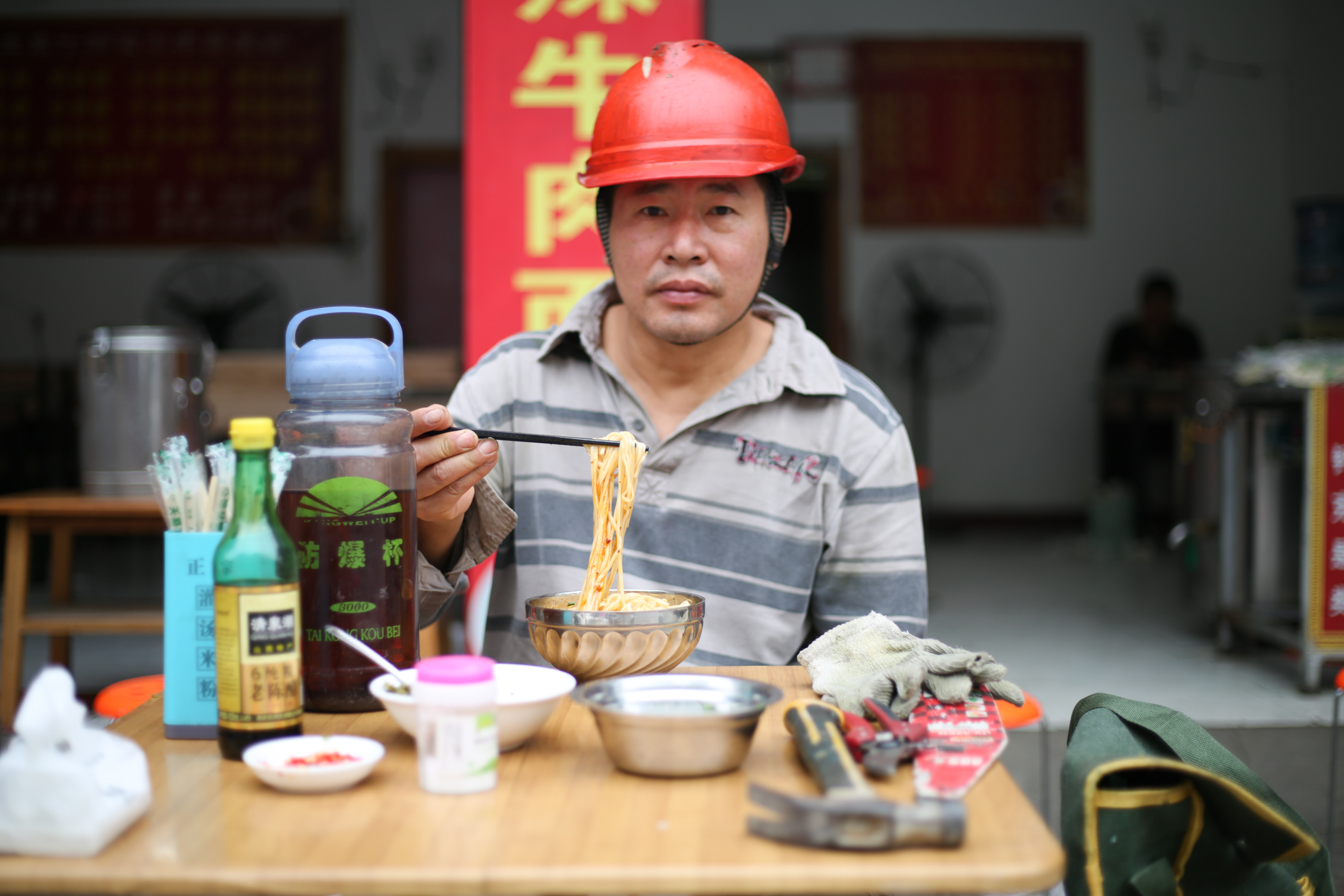
The FAO says, however, that the environmental impact of beef production, along with the deforestation necessary to raise the cattle, has been driving more consumers to opt for chicken or other options. “Globally, there is a growing trend among consumers to become increasingly sensitive to animal welfare, environmental and health concerns, and poultry has the least carbon footprint,” its 2032 agricultural outlook reads.
Economics is another factor. Both Brazil and Argentina have seen per capita consumption of beef decline over the past decade. The changes in consumer behaviour and meat prices in Brazil, the largest exporter of beef in the world, are related to the beef production cycles and the increase in demand from China since 2019, says Thiago Bernardino de Carvalho, a livestock researcher at Esalq, the University of São Paulo’s agricultural school.
Between 2016 and 2019, an increase in production in Brazil drove the price of beef on the domestic market down, and consumption up, according to Carvalho. With lower prices, producers began to invest less in beef. In turn, the then diminished supply led to an increase in prices. Between 2020 and 2022, the price of meat in general rose by 30% in Brazil, according to the Broad Consumer Price Index, Brazil’s official inflation indicator. In 2023, it fell by almost 6%.
“Brazilians prefer beef, but if they don’t have the income, they won’t buy it,” says Carvalho. “When you have an increase in GDP and income, the consumer goes back to consuming [animal] protein. This is true in Brazil and all over the world.”

The trend is visible in Argentina, which has been mired in an economic crisis for several years, struggling with one of the highest levels of inflation in the world, at 124% as of August. While the amount of beef eaten has been creeping up again, at 53 kg per capita in 2023, it still remains well below the 67 kg seen during the 2007-2009 peak. Argentina’s agriculture ministry reported that exports of beef jumped 13% in the first five months of 2023, compared to the same period last year, driven by demand in China, which buys 78% of Argentina’s beef.
Per capita, Chinese people eat about one-third of the amount of beef consumed by those in the United Kingdom, one-sixth of what Americans and Brazilians eat, and one-ninth of the average Argentine’s diet. Pork and poultry have traditionally been favoured over beef in China – and continue to be by far the most consumed meats. But rising incomes and changing dietary habits, as well as low domestic supply, have all played a role in the increase in the country’s beef imports, which grew by around 25% in just 11 years, according to the FAO, to over 4 kg per capita in 2022.
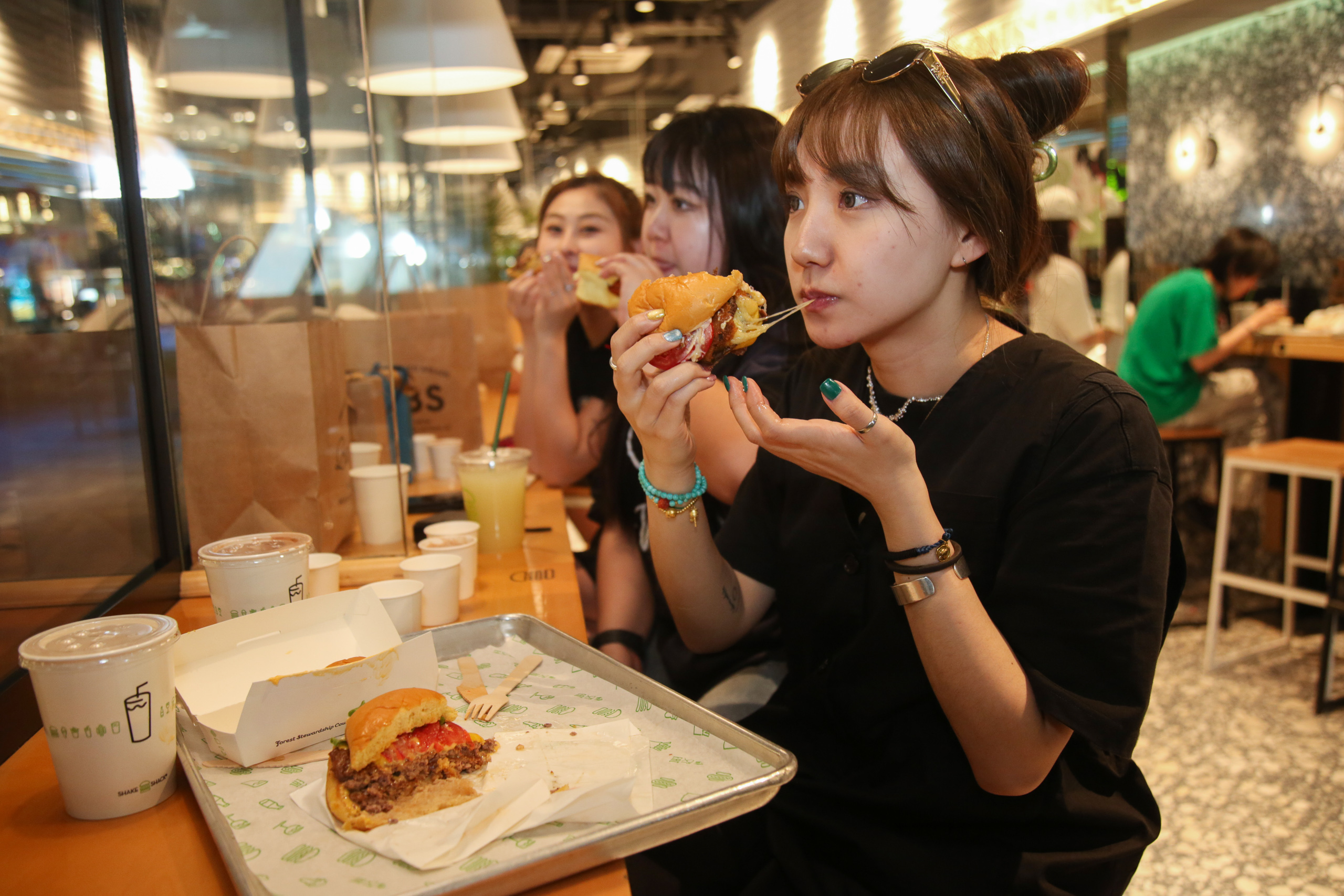
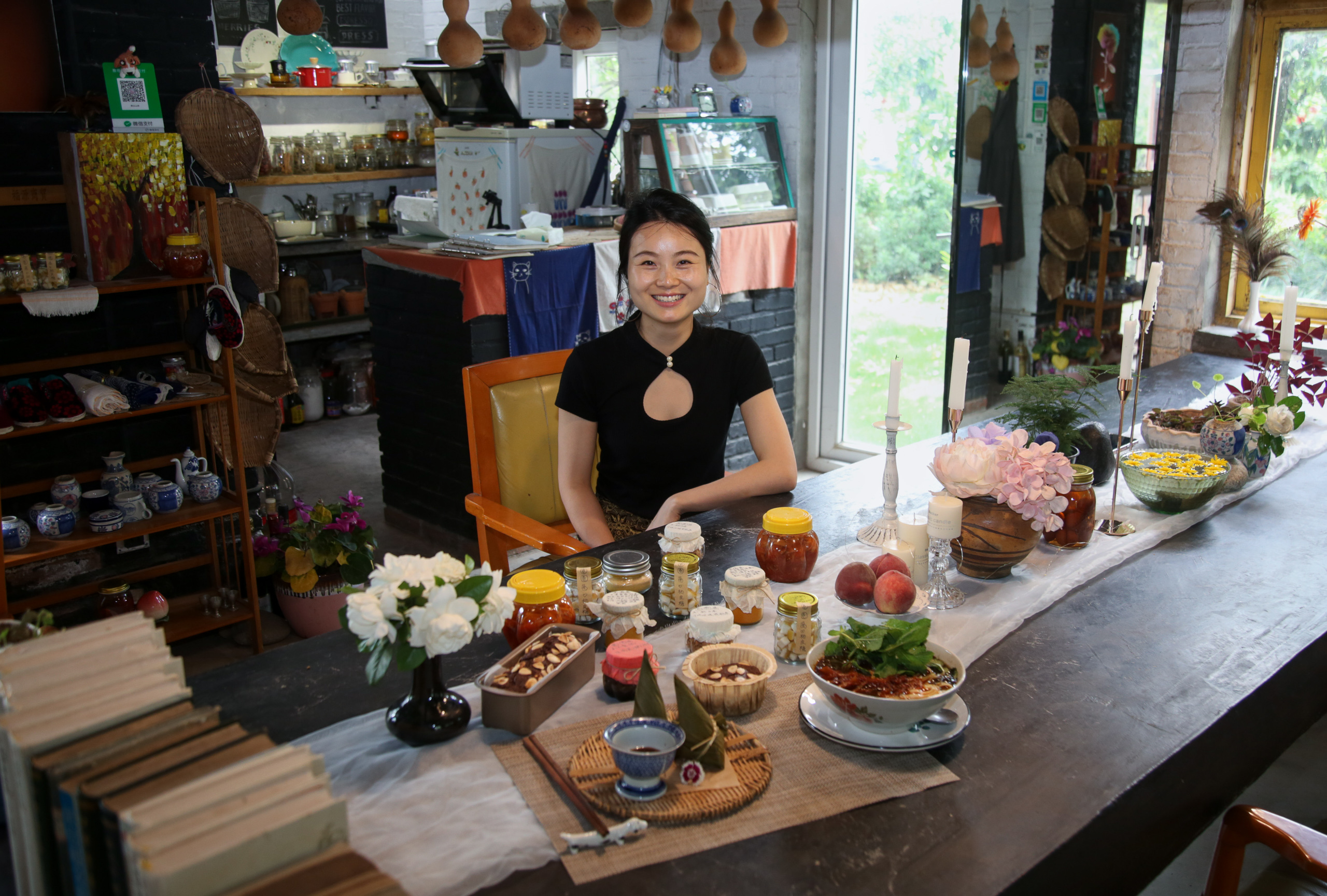
“Cows have held significant importance in Chinese culture since ancient times, symbolising hard work, docility and abundance,” says Z*, a 44-year-old living in Beijing, who has been a vegetarian for 11 years. While she was working in the sustainable development field, Z identified a “shift” in her “perception of life”, and began to feel that “adopting a vegetarian diet is a good choice, especially avoiding the consumption of live beings.”
While she says hasn’t seen a strong trend towards veganism or vegetarianism in China, she also hasn’t felt any sort of backlash. Vegetarians can find restaurant options in bigger cities that offer mock meat dishes based primarily on soy products, prepared using traditional Chinese cooking methods, she adds. What is missing, says Z, is a better understanding of how food consumption connects to issues such as forest conservation and livestock farming.
For 37-year-old Beijinger Deng, cutting out meat entirely has never really been an option. She stopped eating beef for three years, but eventually went back, saying that the restrictions “heightened her desire for meat”, while Chinese cooking habits also made it difficult to keep up: “In reality, it’s possible to accidentally consume it, especially when dining out, which is really common for a city life.” She says there are fewer vegetarian-only dishes in Chinese cuisine, and many restaurants use animal-based oils, making it difficult to adhere to a strictly vegan diet.
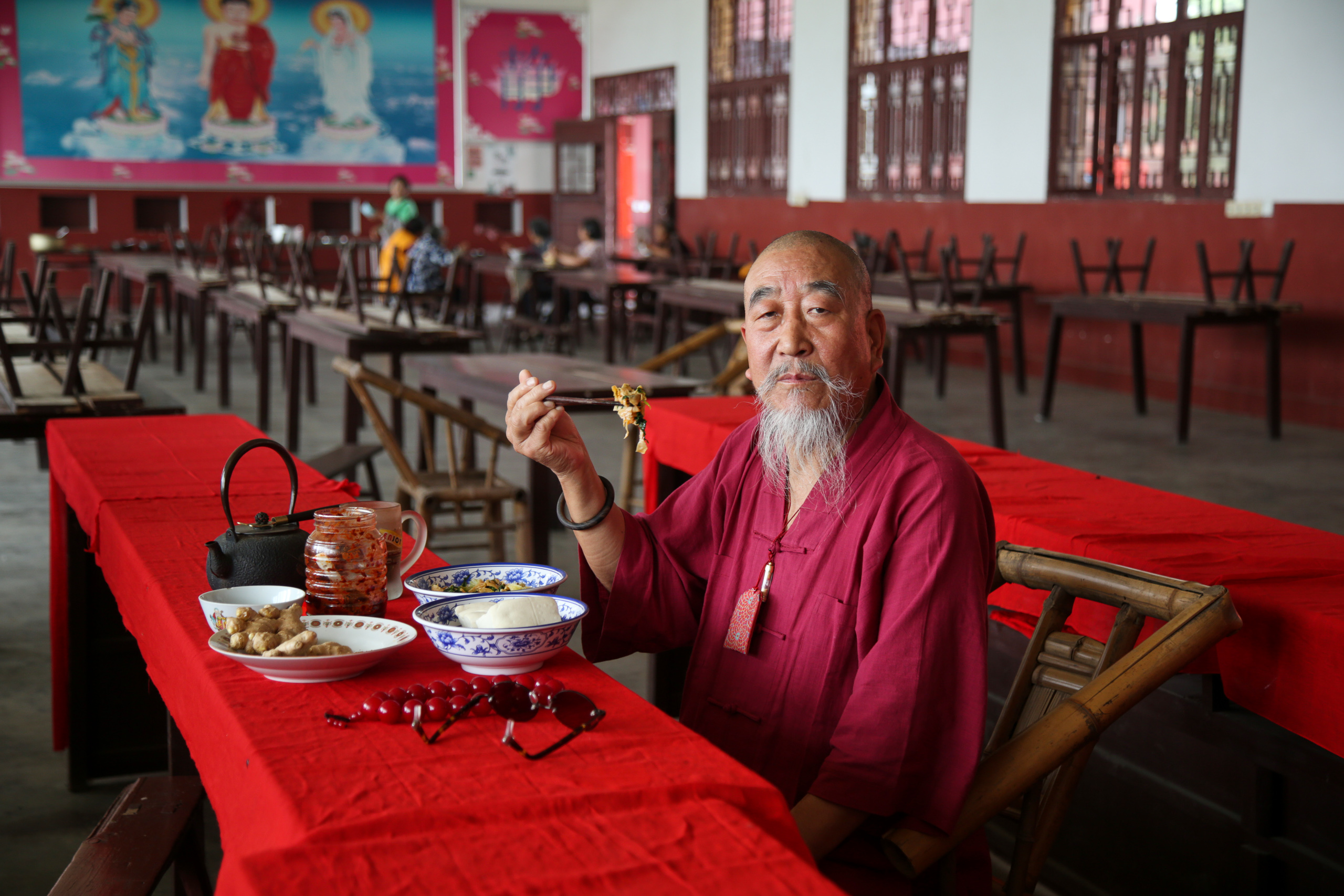
“I believe there hasn’t been much serious discussion about vegetarianism in China. Most people think it’s something that only monks practice,” she says. “Life is short, so I eat what I want,” she adds.
On the outskirts of São Paulo, in the favela neighbourhood of Paraisópolis, a small food stand run out of a garage sums up the consistent allure of meat. Here, Erbenes Alves, 43, and Geanes Maria de Souza, 46, sell cuts of roast beef as well as roasted chicken, the latter being their most popular item. Nearby, butchers call out their prices to passers-by, their shops packed to the brim with punters and product.
In the favela, the relationship between prices and consumption is clear and immediate. Alves can measure it not just by sales, but by smoke – when prices are low, the narrow streets are smoky from fired-up barbecue grills. Nonetheless, as a traditional staple, beef is hard to give up for some, even when prices go up: “I’ve never thought of cutting back,” says Cleiton Araújo, a house painter, munching on a churrasquinho, a skewered beef kebab.
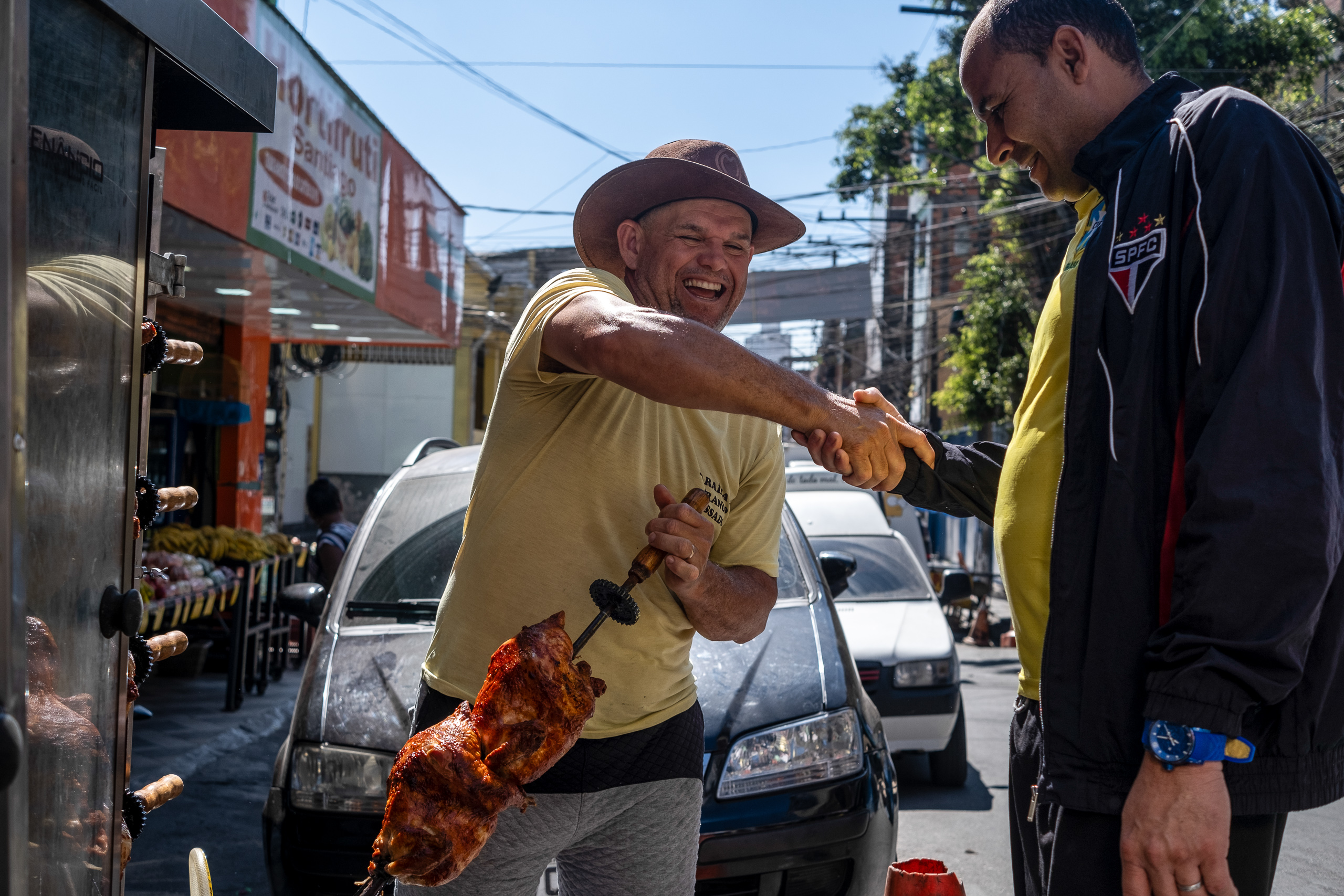

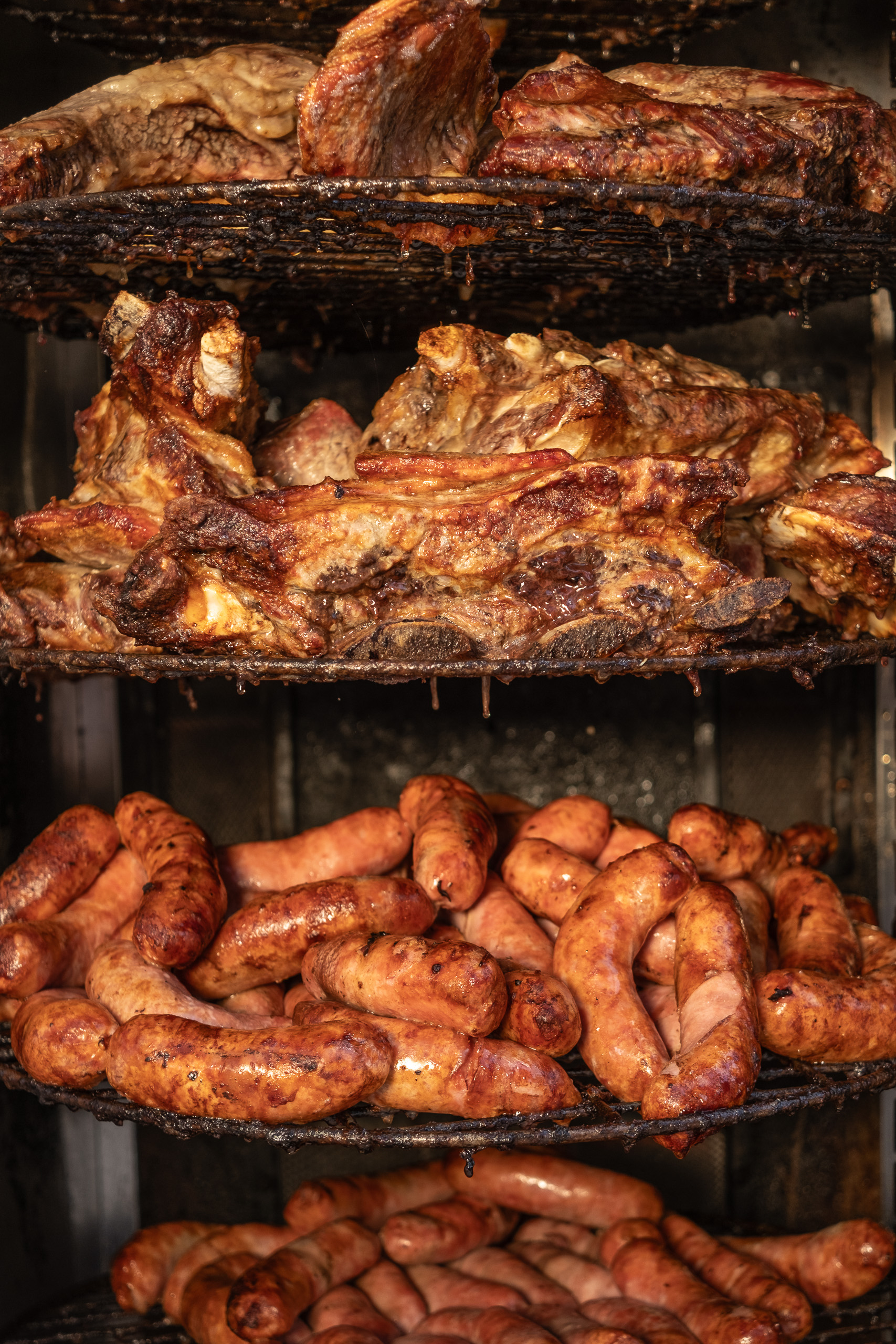
Tradition is a hard nut to crack. At a neo-Tudor home in Buenos Aires’ Villa Urquiza neighbourhood, a group of friends mingled around the smouldering coals of a Sunday asado that featured a variety of cuts of beef, chorizo, chicken and vegetables. It wasn’t just a love of meat that brought them together, but the pleasure of being in a community, of commiserating over politics, economics and family travails.
In practical terms, Ervin Jesus, a doctor, says he eats beef because it’s tasty, easy to prepare and, according to him, is still the cheapest option for a nourishing meal. “There are those who say, ‘let’s plant lettuce so we don’t kill cows.’ But to plant lettuce, you still need to transport it, which uses fuel and pollutes,” the 41-year-old says. “Objectively speaking,” he claims, “there isn’t a reality where we are going to eat organic and not contaminate the country.”

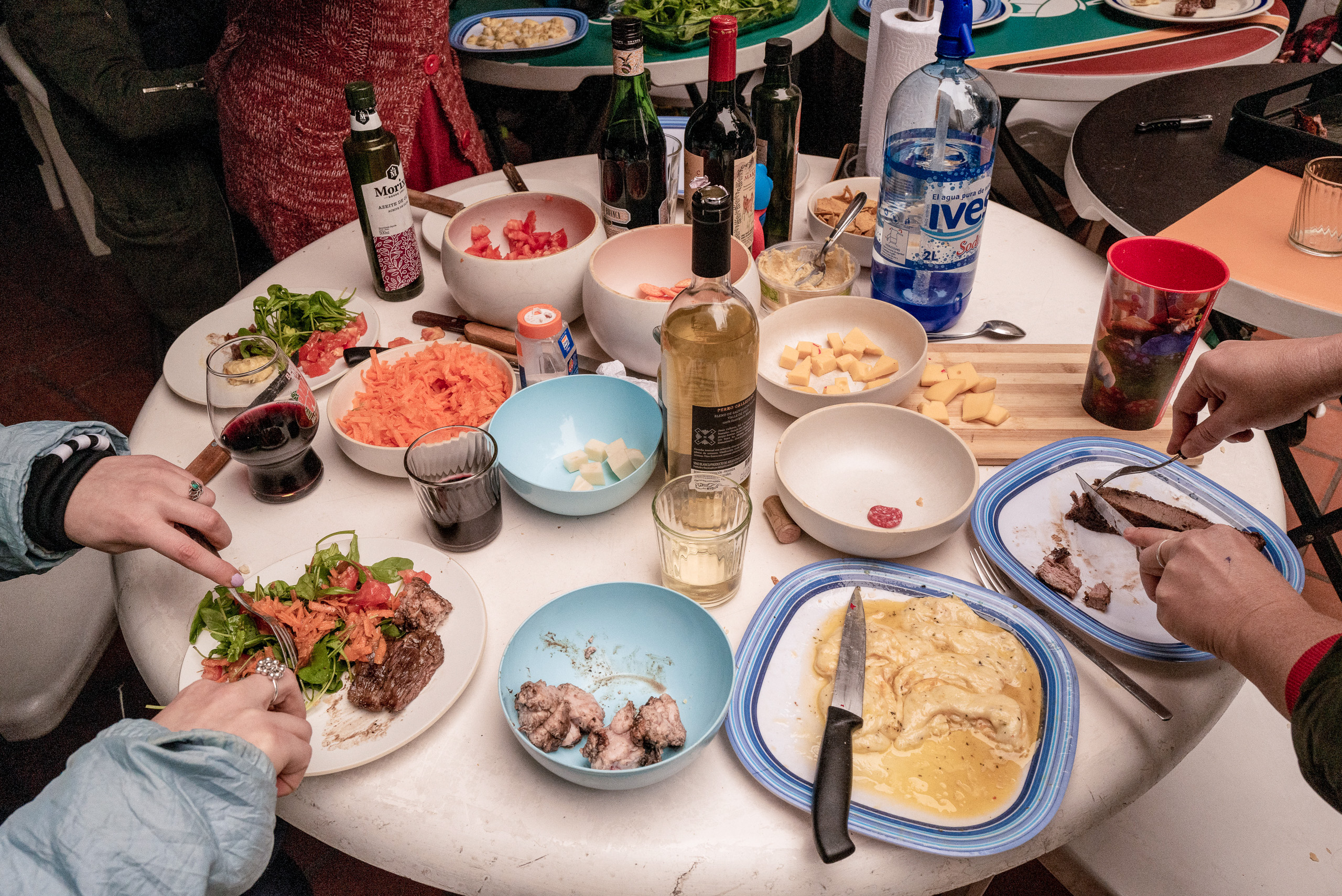
Despite this perception, studies have shown that a 50 gram chunk of red meat is associated with at least 20 times more greenhouse gas emissions than a 100 g portion of vegetables, and 100 times as much land use.
Back in Brazil, in the middle-class São Paulo neighbourhood of Pompéia, Maria Pia Banchieri reflected as she sat with friends, nibbling on iscas de carne, strips of red meat often eaten as a bar snack. “By reducing my meat consumption, I’ve started to eat better,” says the 51-year-old publicist and teacher, who still eats beef two or three times a week, having been raised consuming it daily. “I make lunchboxes, and they’re now much more varied [than my previous diet]. I also feel that my health has improved.”
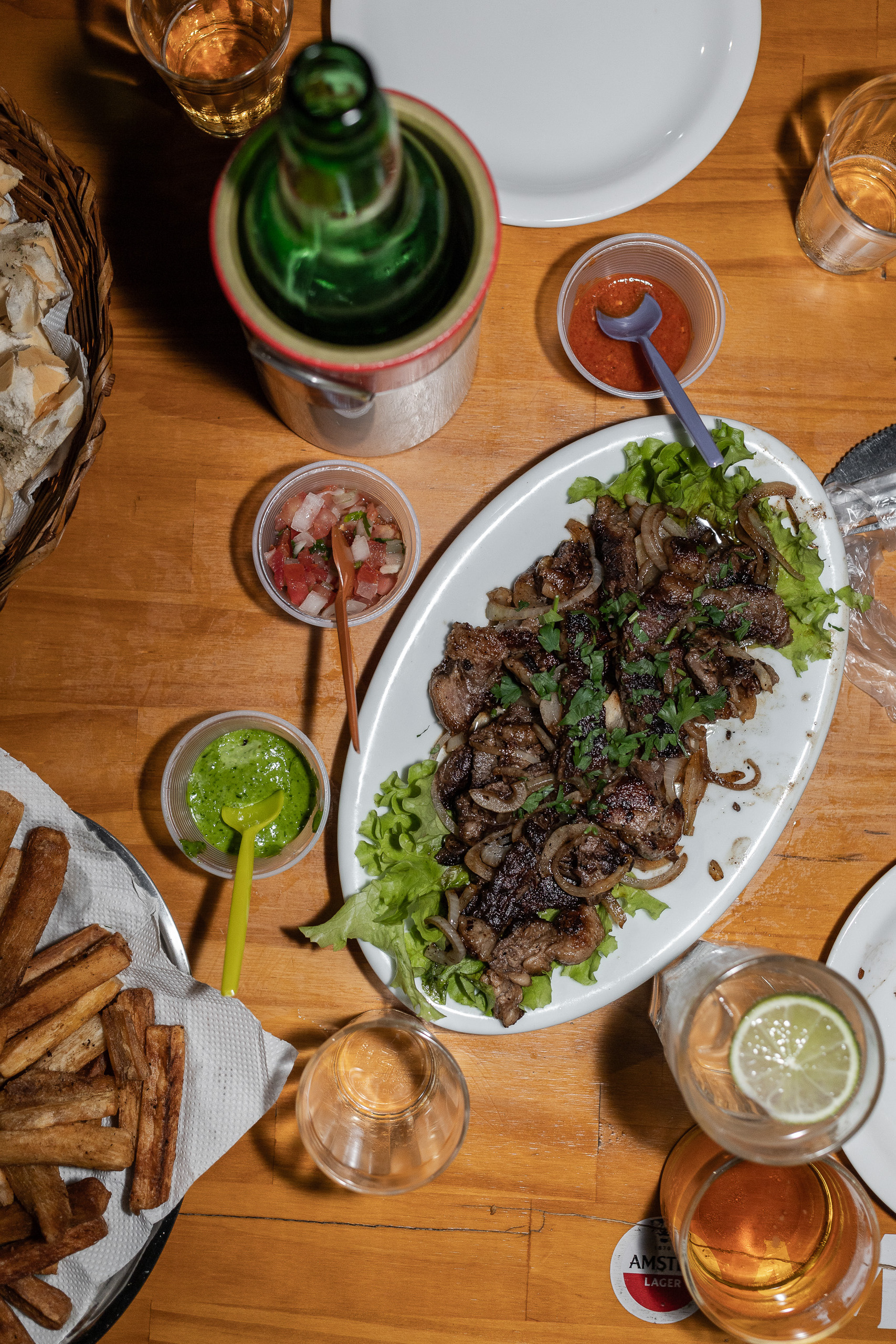
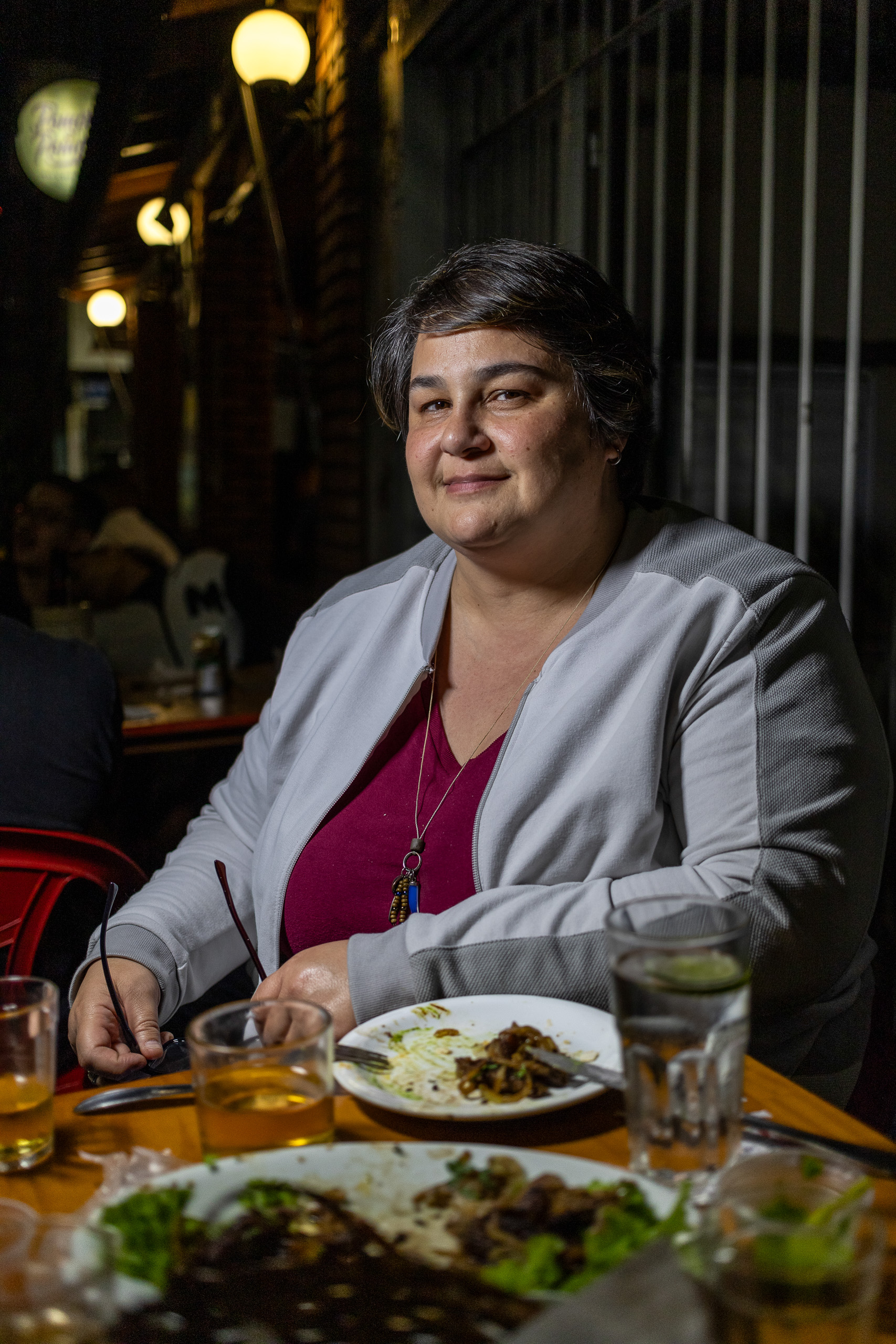
A changing reality
For Manual Martí, a vegan for 49 years, the shift towards a more plant-based diet is already underway. He founded the Vegan Union of Argentina 20 years ago at a time when, he says, no one knew what being a “vegan” meant. “Finding another vegetarian was like an event,” he says, solemnly.
Now, he calls veganism “the largest revolution in the history of humanity, because it’s something that is global, it’s pacifist, it’s loving, it’s based on an ethical position.”
When people start to understand the statistics related to the consumption of animal products, he says, “they become aware, reflect, and change their habits. And that is uncontrollable.” While it’s a shift that is happening from the ground up, he believes it would be much stronger if the state got involved in promoting such options. But it’s still proving to be an uphill struggle. His organisation has repeatedly tried to get the government of Buenos Aires to incorporate one vegan or vegetarian option into the lunch menus of public school cafeterias, to no avail. Meanwhile, the Institute for the Promotion of Beef (IPCVA) has held a “passion for Argentine beef” contest for students as a way of encouraging them to study the cattle industry.
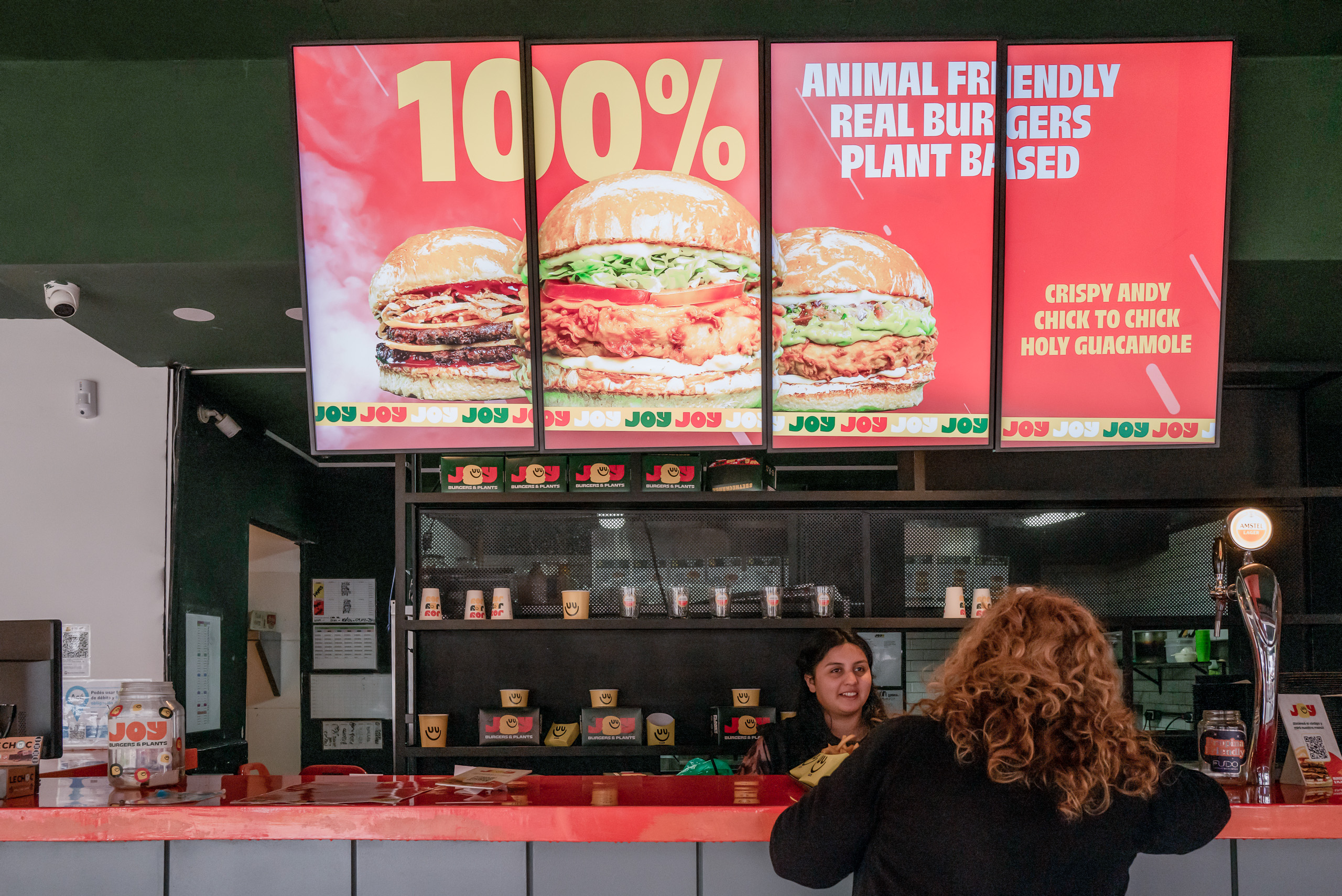
“Everyday [students] eat some type of animal. Maybe they accompany it with mashed potatoes, but they’re eating beef, or pork, or fish, or chicken,” said Marti, proof for him that veganism is something that continues to be “discriminated against”, despite warnings from international organisations and climate scientists that identify livestock production as a major contributor of greenhouse gas emissions.
And yet, the availability of information on vegan options, and the transformation in consumer behaviour is plain to see, says Marti: “Today, after two decades, everyone has a vegan in their family, or in their circle of friends. It’s incredible.”
For Joy Burgers & Plants owner Cabrera, his restaurants are about innovation, not activism. He is not a vegan; one of his two business partners is. But they’re most interested in courting the non-vegan – that experimental consumer who is willing to try something new – and see where it takes them. Their goal is to break with the idea that vegan food doesn’t taste good, and they’re doing it honestly. “We are not a healthy food chain, but we recreate the flavours, textures and experiences of the big chains that we knew when we were young,” he says.
“We feel that nobody was born vegan, but they became vegan because of a question of ideals, and because the era of information is way more immediate, ephemeral and constant,” says Cabrera. “We’re looking for a food revolution and we’re inviting everyone.”
*Interviewee asked to not be named for professional reasons, pointing to sensitivities around foreign media in China.

